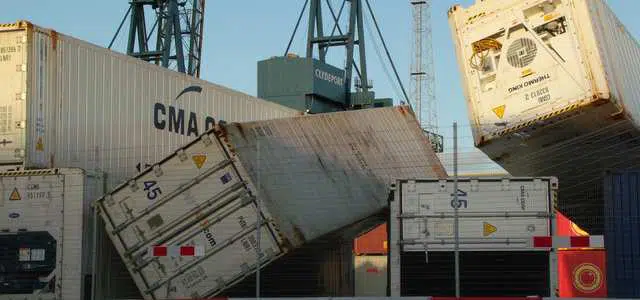The Council of Supply Chain Management Professionals’ EDGE annual conference held in Atlanta during 24-27 September revealed one of the reasons why packaging and labeling is a serious issue to be considered by all companies. Every year, improper packing, labeling, storing and handling leads to global losses of $15 billion due to damaged goods which cannot be sold.
In truth, all logistics managers across the world understand that losses will always occur. However, looking at the total number of losses all over the world, it is clear that this situation is not a “planned losses” scenario – but a significant bleeding out of potential revenues which would impact the overall financial standing and results of many companies.
Damages in Transit Must Not Be Treated Lightly
Damaged products represent a double loss for companies: of actual revenues and of reputation. Whenever a client receives their order with damaged products, their trust in the supplier will be less and less, until the day when they decide to start looking for another supplier.
The self-placating explanation “but damages in transit will always happen” is not good enough. Not when we are talking of $15 billion annual losses – that’s the GDP of a small country. And not when the solutions to remedy this situation are readily available, namely, professional packaging and labeling solutions.
How Packaging and Labeling Play a Key Role in Reducing Damaged Goods
Handling, storage and transport of goods is never done with the utmost care they should. Delivery schedules have to be complied with, packages must be processed at a certain hourly rates and warehouse shelves need to be stocked as fast as possible. For this reason, all finished products are placed into sturdy packaging units – pallets, containers, boxes – and fitted with a label which helps warehouse workers and transportation company scanners identify the contents easily.
What happens when the packaging unit is not reliable and the label is not professionally printed and affixed on the containers? The first type of damage products suffer in this situation is mechanical damage during handling. The pallet or container cannot protect the products during manual or mechanical manipulations and the products are torn or broken.
The damage continues during transit, when the undamaged products are further exposed to shocks, vibrations and the weather conditions. And an inadequate label will quickly peel away or become unreadable after being in contact with water.
Specialized Packaging Materials Are Not a Fad
The second manner in which products get damaged during storage and transportation is when they are not placed in the specific type of packaging materials required by their characteristics.
Food and pharmaceutical products need to be packaged into hygienic crates and containers. In some cases, special thermo-insulating layers are necessary to maintain the temperature of the products constant throughout the journey.
Electronic parts and components have to be placed into ESD materials, because just a single electrostatic discharge caused by rubbing would make them unusable.
A Simple Logistic Decision with a Major Impact
Finding, testing and using professional packaging materials is the simple answer to prevent so many losses from damaged products. Specialized companies like Logistic Packaging have the know-how and the experience to advise any client from any industry in choosing the right packaging and labeling options for their products.
And if you do not believe that a small change in how you treat your supply chain would make a difference, just think that, in the least optimistic scenario, opting for professional packaging and labeling solutions would decrease global losses from damaged goods by 1%. This means $100 million per year. For many companies, just a 1% decrease in losses could mean the difference between barely breaking even and having a profit.
 International - English
International - English




 United Kingdom -
United Kingdom -